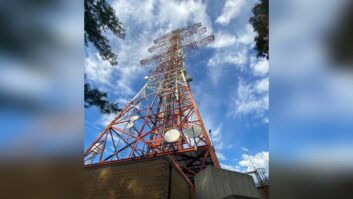Radio World’s “Guest Commentaries” section provides a platform for industry thought leaders and other readers to share their perspective on radio news, technological trends and more. If you’d like to contribute a commentary, or reply to an already published piece, send a submission to [email protected].
Below is perspective from Matthias Hettwer in response to the commentary “Why Reviving Shortwave is a Non-Starter.”
To Whom It May Concern,
I just read the guest commentary “Why Reviving Shortwave is a Non-Starter” on your web site. While some of the stated facts would seem true, I believe that some other facts were not mentioned by the guest commentators, and these other facts could very well modify or even change the conclusion reached by the commentators.
The commentators are correct in stating that the Internet with its Social Media has become very important and influential worldwide. Radio no longer has an information monopoly position and is therefore less important. They are also correct in asserting that existing radio stations and services want to emphasize their relevance and secure future budgeting for themselves. And shortwave radio hobbyists are naturally promoting their activities.
But here is something they did not mention at all: Extremely high-performing yet comparatively low-cost shortwave receivers have recently entered the market, ironically made by Chinese brand name manufacturers such as Tecsun, and also ironically Russian engineered SDR receivers made in China, known as the Malahit receiver and no-name clones of the Malahit online such as on eBay. All these are available in the $150-200 price range and most perform at the level of formerly $300-400 shortwave radios. Not to mention American brands (made in China) Eton and C. Crane. And there are compact SDR based shortwave radios in the $80-120 range by xdata and others. Occasionally, they are sold out and one has to wait for new shipments. My point: Shortwave radios are available and purchased, and it is fair to conclude that they are used.
[Related: “An Argument for Shortwave Radio, Its Benefits in Times of Crisis”]
Over-the-air broadcast audience numbers have always been difficult to establish. This is the nature of a totally secure one-way communication with no cookies and spyware, and no hacking or device hijacking. Of course the percentage of shortwave radio use has declined due to other options. But let’s not assume that nobody is listening.
And let’s not assume that nobody would try using one of the above mentioned small yet high-quality shortwave radios when provided while facing Internet censorship or outage. Instead, let’s roll out shortwave radio distribution campaigns in regions that need them most. Let’s fire up the remaining shortwave broadcast transmitters and beam news into regions that would benefit. The commentators did not mention that, of all countries, China is doing exactly this right now by employing an extremely large number of shortwave transmitters with high signal power (100-500kW transmitters) and can be heard clearly 5,000-10,000 miles away.
Sincerely,
Matthias Hettwer







